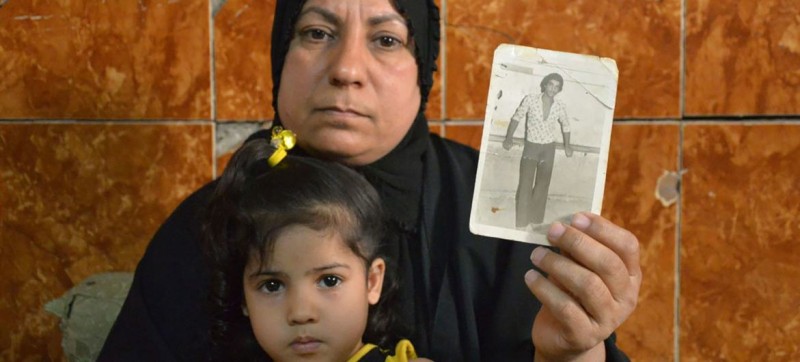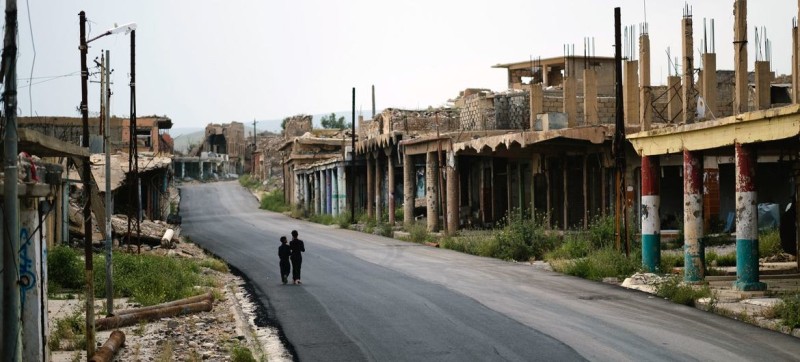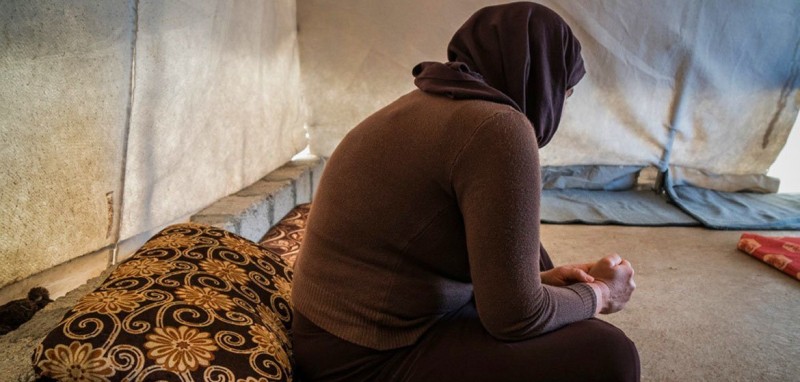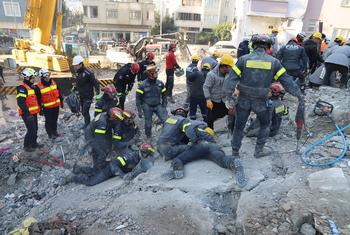
© ICRC/Mohammad Jawad Alhamzah A woman in Iraq displays a photograph of her husband who disappeared more than 30 years ago.
The appeal comes in the latest report by the UN Committee on Enforced Disappearances, which visited the country in November.
The report examines five “waves of disappearance” in Iraq, including enforced disappearance. It covers the period starting with the Ba’ath era from 1968-2003 – characterized by the authoritarian rule of Saddam Hussein – through to the anti-Government protests from 2018 to 2020.
More work ahead
The UN Committee is comprised of 10 international rights experts who monitor global implementation of the Convention against enforced disappearances.
While acknowledging the serious challenges the authorities face in addressing the situation in Iraq, the experts were deeply concerned that enforced disappearance has been widespread over different periods, and that impunity and revictimization prevail.
“The visit constitutes a new step in the Committee’s interaction with Iraq, one of the first countries to ratify the Convention,” they said, adding, “but lots remain to be done.”

Unsplash/Levi Meir Clancy Iraqi children walk past a marketplace in Sinjar which was ruined in the war with the Da’esh terrorist network, otherwise known as ISIL.
Ongoing patterns of disappearance
The Committee met with senior officials, victims, and civil society representatives in Iraq.
Members heard numerous testimonies from victims, including a mother whose son disappeared after being stopped at a checkpoint while going to visit a cousin. Her story was indicative of an ongoing pattern in Iraq, according to the Committee.
Children ‘given’ away
Another common pattern concerns the alleged enforced disappearance of children, particularly from the Yazidi minority community, born after their mothers were sexually abused in camps operated by the extremist group ISIL or Da’esh.
The Committee learned that, in some cases, mothers were compelled to leave their children in orphanages after returning to Iraq, intending to take them home as soon as possible.
However, when they went to reclaim them, the mothers were told that their children had been “given” to another family, allegedly with direct involvement of some State agents.
A ‘massive’ problem
Hundreds of families are also still searching for relatives they suspect are in camps in Türkiye, Syria, or Iran, “where contact with the outside world is impossible”, the Committee said.
The report noted that following decades of conflict and political violence, disappearances – including enforced disappearances – have been identified as “a problem of massive proportions in Iraq.”
Official estimates indicate that since 1968, between 250,000 and 1,000,000 people have been disappeared, though it is impossible to provide more precise figures.
Five ‘waves’
During the Ba’ath era in the Federal Iraq and Kurdistan region, up to 290,000 people, including some 100,000 Kurds, were forcibly disappeared as part of Saddam Hussein’s genocidal campaign in Iraqi Kurdistan, the report said.
The second “wave” of disappearances covers the 2003 invasion and subsequent occupation, to the pre-ISIL period. During this time, the United States military and allies captured at least 200,000 Iraqis. Of this number, 96,000 were held at some point in prisons administered by the US or the United Kingdom.
“It is alleged that detainees were arrested without a warrant for their involvement in insurgency operations, while others were ‘civilians in the wrong place at the wrong time’”, the Committee said.

Giles Clarke/ Getty Images Reportage A Yazidi Kurd from Sinjar who was abducted by the ISIL terrorist group, pictured in Mamilyan Camp for internally displaced persons in Akre, Iraq.
ISIL atrocities
The report documented how ISIL’s proclamation of an Islamic caliphate, including a large swathe of Iraq, saw new rounds of abductions and mass killings of Iraqi soldiers or security forces from 2014 to 2017.
The situation deteriorated further when Popular Mobilization Forces (PMF) conducted military operations to retake major cities from the extremists, during which pro-Government forces disappeared thousands of Sunni Arabs, mainly men and boys.
More enforced disappearances occurred during the wave of demonstrations in Iraq from 2018 to 2020, when thousands took to the street to protest against corruption.
Legislation and investigation
The UN Committee urged the Iraqi Government to immediately include enforced disappearances as a separate offence in national legislation as currently it cannot be prosecuted.
Members also called for establishing a comprehensive search and investigation strategy for all cases of disappearances, and they encouraged the authorities to strengthen and enlarge the scope of national forensic investigations.
“Iraq must also immediately establish an independent task force to cross-check systematically the registers of all places of deprivation of liberty with the names of all detainees,” the Committee said. “The task force must ensure that all detainees are registered and that their relatives are duly informed of their whereabouts.”
Address secret detention allegations
Iraq should also clarify persistent allegations of secret detention, which the State has denied. In this regard, the authorities should establish an independent commission that would carry out a fact-finding mission to verify whether secret places of detention exist.
The Iraqi authorities were also urged to take legislative and judicial measures to address the needs and rights of victims.
About the UN Committee
The Committee on Enforced Disappearances was appointed by the UN Human Rights Council in Geneva. The independent experts are not UN staff, and do not receive a salary for their work.
While in Iraq, the delegation also observed developments surrounding two exhumations and visited a provisional centre of DNA identification in the northern city of Sinjar, home to the Yazidi community, among other activities.

Türkiye-Syria Earthquake
DONATE!
Emergency and search-and-rescue teams have deployed to assess and prioritize urgent needs and to provide life-saving assistance following the devastating earthquake near the Türkiye-Syria border.

